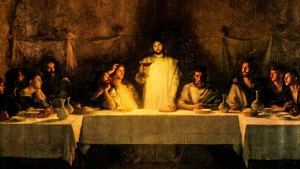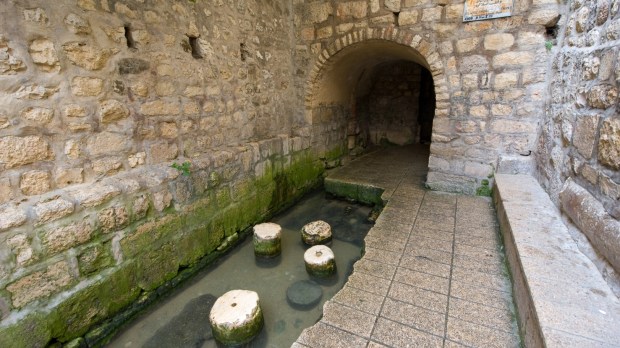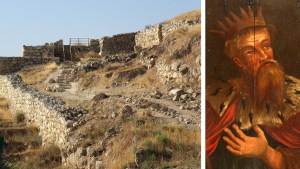The Pool of Siloam is the place where, according to the Gospel of John (Jn 9:1-12), Jesus healed a man who had been blind since birth. The text reads:
As he walked along, he saw a man blind from birth. His disciples asked him, “Rabbi, who sinned, this man or his parents, that he was born blind?” Jesus answered, “Neither this man nor his parents sinned; he was born blind so that God’s works might be revealed in him. We must work the works of him who sent me while it is day; night is coming when no one can work. As long as I am in the world, I am the light of the world.” When he had said this, he spat on the ground and made mud with the saliva and spread the mud on the man’s eyes, saying to him, “Go, wash in the pool of Siloam” (which means “Sent”). Then he went and washed and came back able to see.
Jn 9:1-7
According to the article published by Business Insider, the pool “will be fully excavated and open to the public for the first time in modern history.” Even though a small section of it has been accessible for several years, most of the pool was destroyed and covered after the First Jewish-Roman war (in the year 70).
A coming excavation, the Insider explains, “will completely expose the ancient pool, allowing visitors to view it as part of a tourist route, the Israel Antiquities Authority, Israel National Parks Authority, and the City of David Foundation said in a statement provided to Insider.”
King Hezekiah and the Pool of Siloam
The pool was part of Jerusalem’s ancient water system, and later became a site of religious significance for ancient Jewish people. Religious pilgrims used it as a mikveh (a ritual bath) to cleanse themselves before visiting the Temple.
A small fragment of a stone inscription was recently found in the Siloam Tunnel – a water canal leading to the Pool of Siloam. Carved in ancient times, the tunnel is now located in the Arab neighborhood of Silwan, in eastern Jerusalem. Its popular name, “Hezekiah’s Tunnel,” is due to the most common hypothesis that it dates from the reign of King Hezekiah of Judah, between the late 8th and early 7th centuries BC.
It has been commonly believed that this tunnel corresponds to a “conduit” that is mentioned in 2 Kings 20:20:
“The rest of the deeds of Hezeki’ah, and all his might, and how he made the pool and the conduit and brought water into the city, are they not written in the Book of the Chronicles of the Kings of Judah?”
Archaeologists have found a little piece of evidence (a small limestone fragment) that connects King Hezekiah to this tunnel.
Biblical narratives explain how King Hezekiah prepared Jerusalem for an impending siege by the Assyrians. 2 Chronicles 32:30 explains how he blocked “the source of the waters of the upper Gihon” and led them “straight down on the west to the City of David,” to prevent the enemy forces under Sennacherib from having access to water.
The limestone fragment dates to the 8th century BC. As reported by NewsBreak, the researchers believe it is only a tiny particle of a much bigger monument.
The fragment shows six letters in paleo-Hebrew script distributed in two lines, each with three letters. The first line includes the letters qyh. Researchers suggest that the whole word would have been Hizqyhw –that is, Hizquiyahu, Hezekiah.
The second line shows two letters, a dot, and a third letter. Scholars believe this meant that the first two letters ended a word, and the third letter began another word. They have theorized that the first word, which ends in kh, might have read brkh –berecha, pool, following the biblical narrative that explains that the water flowing through Hezekiah’s Tunnel got all to the way to the Pool (berecha) of Siloam.



